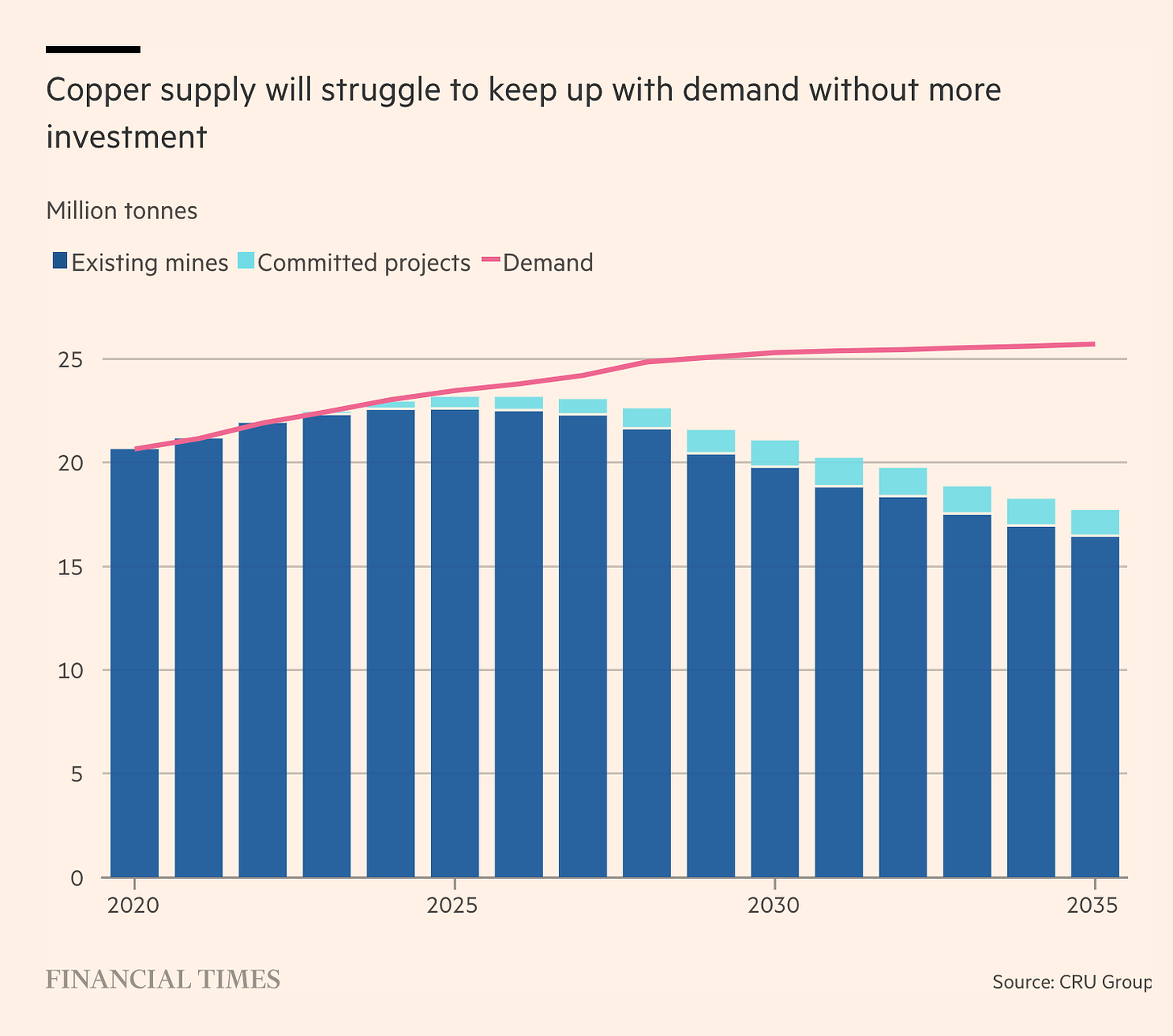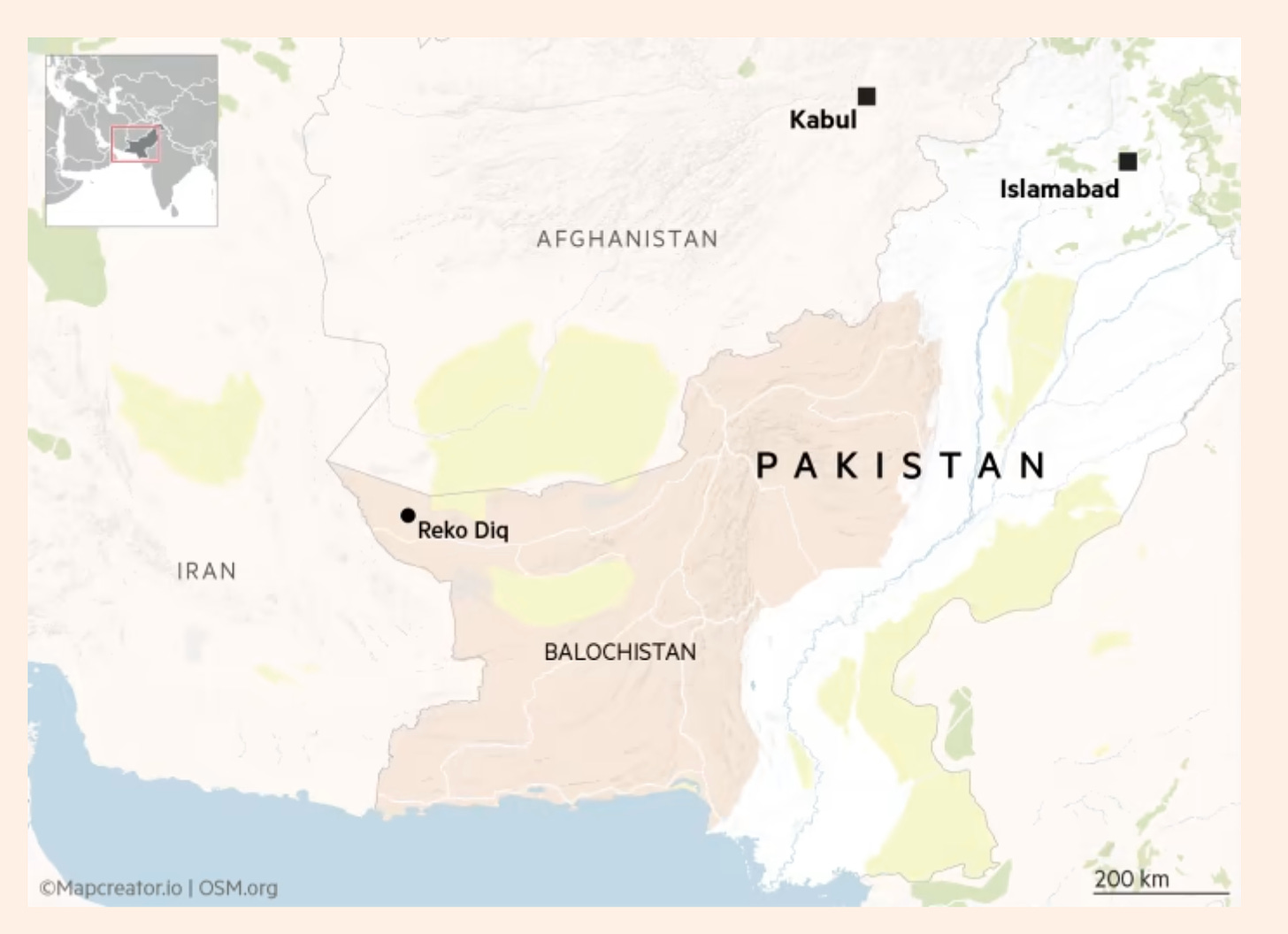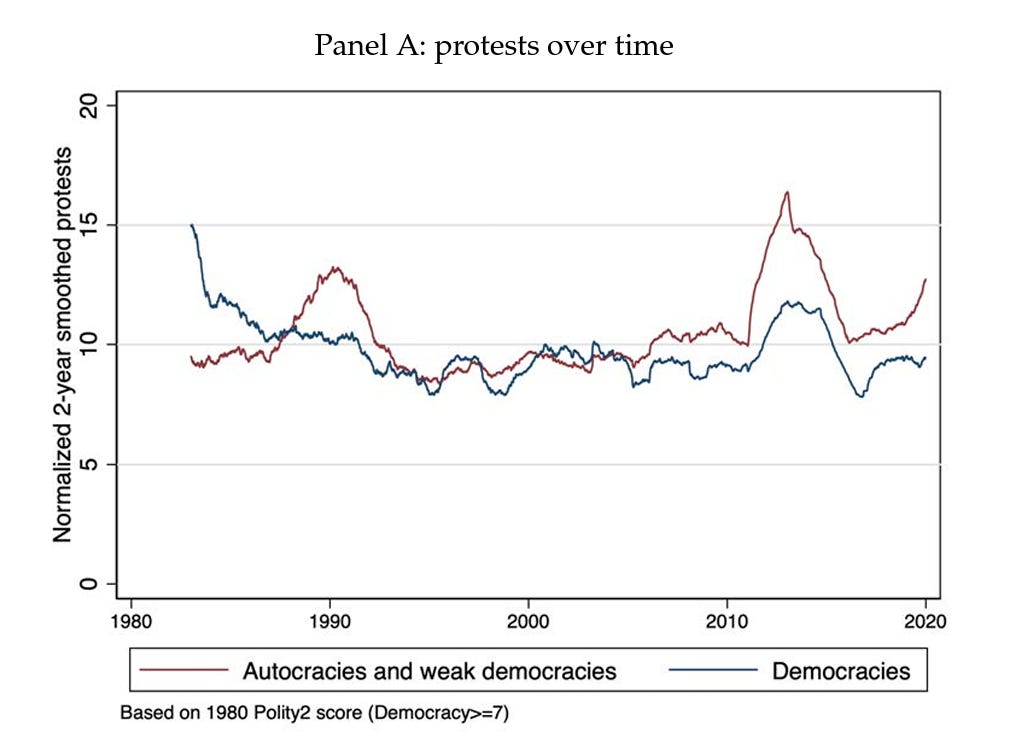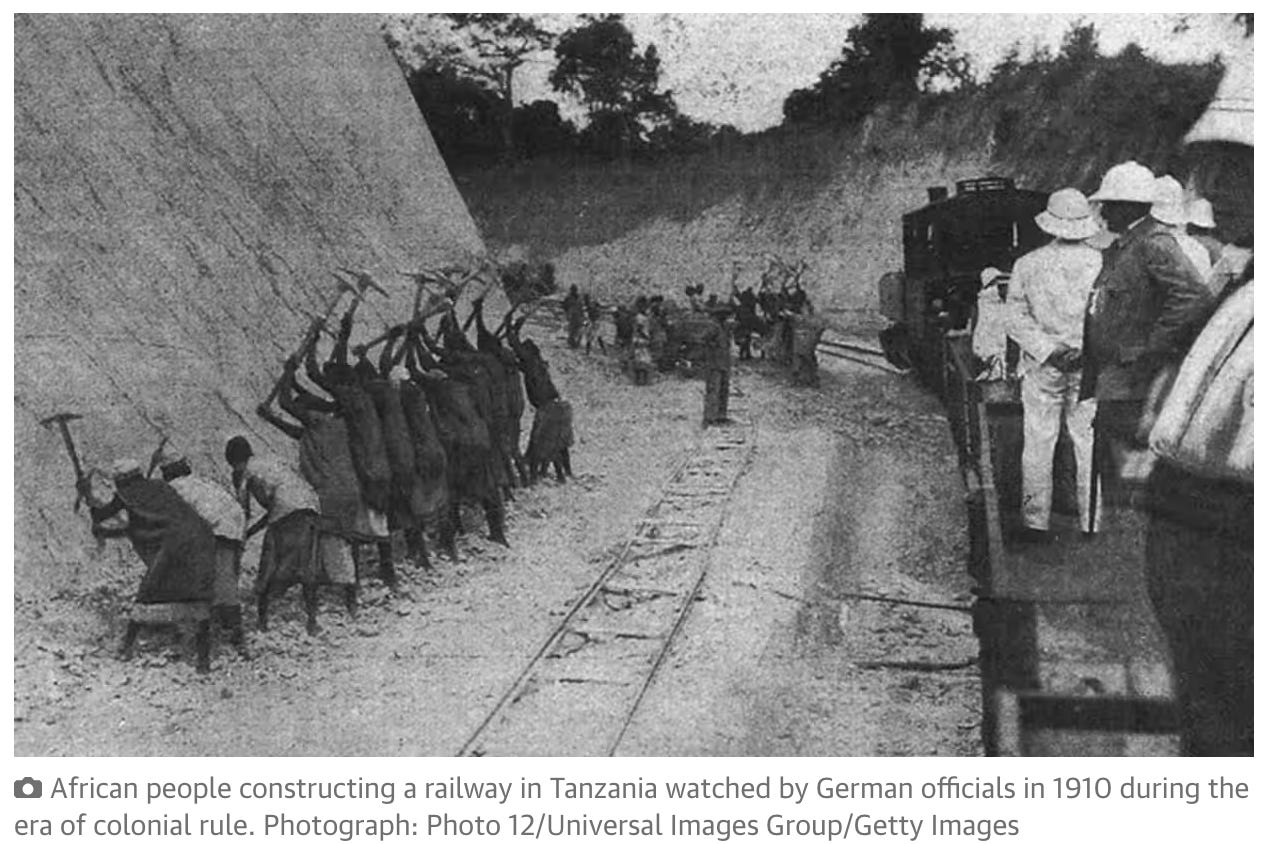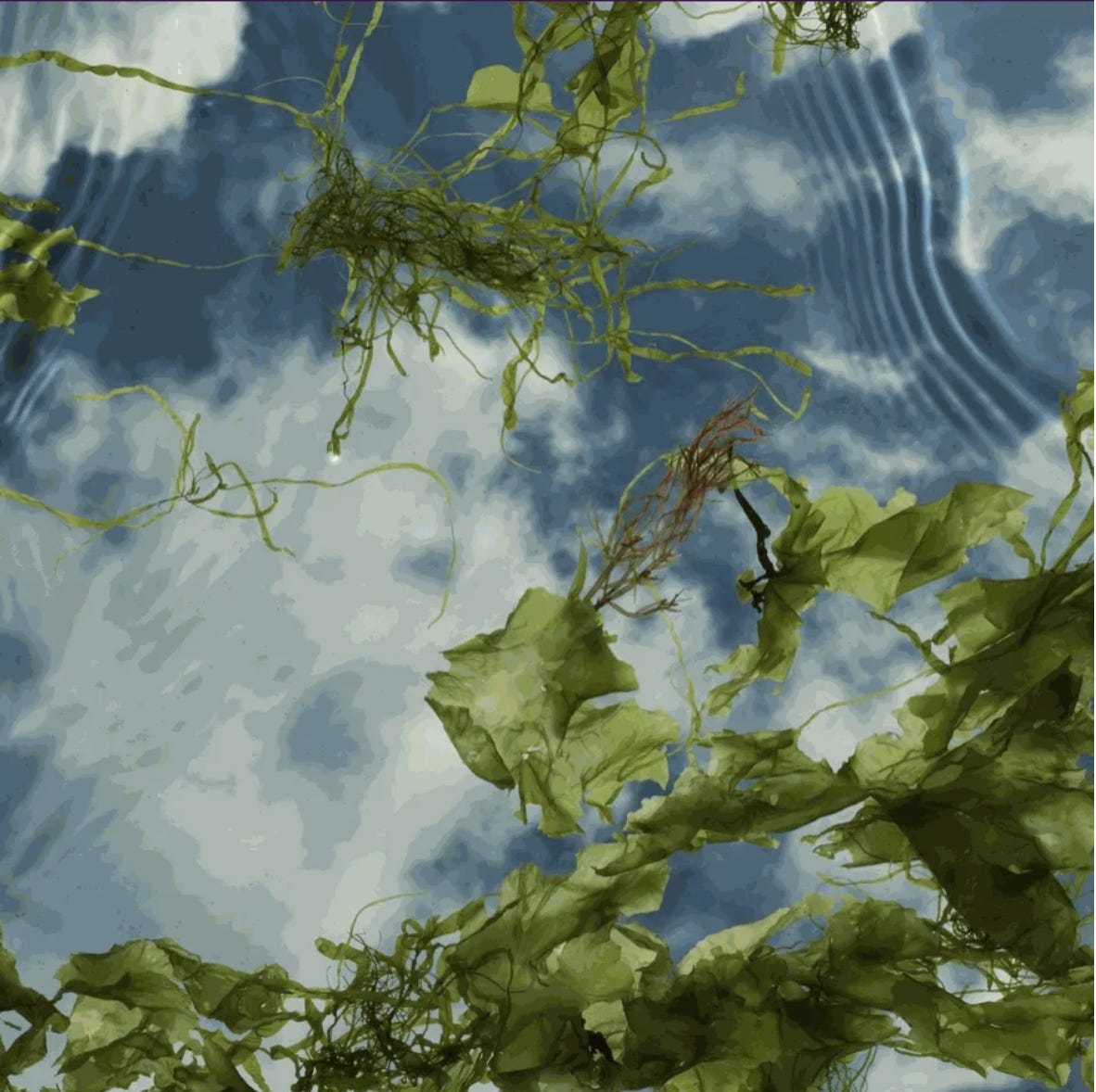Copper frontier, stolen skulls, neo-pictorialism & allotment sauté
Great links, images and reading from Chartbook Newsletter
Thank you for reading Chartbook Newsletter.
Image from the series Alder Brook by Susan Derges, 2012 Source: Photographersgallery
The interest of readers makes this seem a worthwhile project. But what sustains it in practical terms are voluntary subscriptions from a minority of generous subscribers.
Copper crunch
With supply from incumbent mines in countries such as Chile and Peru stalling, an estimated $118bn of investment by 2030 is needed to plug a copper supply gap that will by next decade be equivalent to 35 giant-sized mines.
Projects like Reko Diq in Balochistan, Pakistan.
For three decades!, international mining companies have tussled with officials and locals over a patch of desert around an extinct volcano in Pakistan’s neglected, insurgent-prone western province of Balochistan. Now, after resolving years of legal disputes, Barrick Gold wants to invest $7bn to revive the mining project, Reko Diq, which experts believe contains one of the world’s largest untapped reserves of copper and gold. … “Reko Diq is one of the bigger copper-gold undeveloped projects in the world,” said Mark Bristow, chief executive of Barrick, which aims to start mining in 2028 subject to an ongoing feasibility study. “It’s a very big deal. Any copper mine right now is a big deal.” … Balochistan, Pakistan’s poorest province, borders Afghanistan and Iran and is suffering a brutal, simmering conflict with separatist militants motivated in part by alleged exploitation of the region’s mineral wealth.
Source: FT
To join the circle of those sustaining the flow of great material on Chartbook, click here and choose one of the options.
Children are so at risk in the United States
For subscribers only
A terrible time in the UK (don’t know whether the GDP data revisions affect this)
For subscribers only
The more folks sign up and subscribe, the more viable it is to collate and edit important material like this.
The risk of a Chinese slowdown for the US and the rest of the world:
Brad Setser in the Intelligencer is essential reading.
If you’re not the owner of a company that gets a lot of its profits from Chinese sales, the direct impacts of a Chinese slowdown on the U.S. economy are pretty modest. China’s economy has already slowed over the past nine months, and the U.S. economy has continued to grow. Relative to the size of its economy, China remains a pretty modest market for U.S. exports. Manufactured exports to China are only a half point of U.S. GDP because China just doesn’t import that many manufacturers. If you’re an American working in parts of the economy that produce commodities, you should be paying a lot of attention to China because it’s by far the biggest source of global demand for many commodities and commodity markets. Those markets respond to many things, including supply conditions, but a structural slowdown in China will have some impact there. Financial interlinkages are small, but the big way I think China could negatively impact the U.S. economy is that if China decides to export its way out, the U.S. is still the biggest market for consumer goods and the biggest market for imported goods globally. And while there are tariffs, the tariffs are imperfect. It’s easy to get around a tariff on China by assembling Chinese parts in Malaysia and Vietnam and the like. And so I think that if China really wanted to export its way out, let its currency go, there would be a big further depreciation in the Yuan. And the Yuan’s already a 15-year low, more or less. If the Yuan goes back to the levels where it was when China joined the WTO, without an enormous ratcheting up of trade restrictions, there would be pressure on certain parts of the U.S. economy that I think would be meaningful. Among the advanced economies, Germany has significantly more connections. Germany’s been much more successful selling capital goods and luxury cars that are made in Germany to China than other major economies have been at selling goods made in their countries to China. So Germany has a substantially more direct trade exposure. The rest of Europe is a little bit more like the U.S. — China is not that important a market. It’s not a trivial market, it’s just not such a big market that it’s going to drive activity. A lot of Southeast Asia and East Asia is tightly connected to China. A big part of that connection, though, is producing components that go into the Chinese export machines.
Robert Harding in the FT on why learning to love a Chinese trade surplus will be harder this time
One thing to note is that a growing Chinese surplus would have superficial attractions. The economic environment of the mid-2000s was popular: it let western consumers live beyond their means, even if it sped the decline of their manufacturing industries. Right now, a deflationary impetus from China would help to address the rise in the cost of living. This would palliate a source of pain for many western politicians. However, there should now be more international consensus against China running a big surplus than there was 20 years ago. China’s economy is much larger and richer than it was then. Japan and Germany, which have long prospered from exports of luxury cars and capital equipment to China, now confront its rapid emergence as an automobile exporter. The rest of Asia competes with China in export markets so most nations, excepting pure commodity exporters, have something at stake. If the US had not retreated from economic co-operation itself, as it did in abandoning the Trans-Pacific Partnership trade deal, it would have more standing to make these points. With American diplomacy now concentrated so heavily on military and security competition with Beijing, any objections it makes to Chinese economic policy will be regarded with suspicion by many other countries.
Or this:
1.2 million protests - 2011 really was a historic peak of protests
Citizens have long taken to the streets to demand change, expressing political views that may otherwise be suppressed. Protests have produced change at local, national, and international scales, including spectacular moments of political and social transformation. We document five new empirical patterns describing 1.2 million protest events across 218 countries between 1980 and 2020. First, autocracies and weak democracies experienced a trend break in protests during the Arab Spring. Second, protest movements also rose in importance following the Arab Spring. Third, protest movements geographically diffuse over time, spiking to their peak, before falling off. Fourth, a country’s year-to-year economic performance is not strongly correlated with protests; individual values are predictive of protest participation. Fifth, the US, China, and Russia are the most over-represented countries by their share of academic studies. We discuss each pattern’s connections to the existing literature and anticipate paths for future work.
Source: NBER
Internet for all
For subscribers only
Alder Brook by Susan Derges, 2012
Infernal spiral
“It was an infernal spiral,” he said slowly. “In the concrete sarcophagus of my cell, I felt I could not do any differently. The ennui provoked the escape.” Rédoine Faïd is on trial for masterminding his second prison escape in a decade
Source: FT
Stolen Skulls
Source: Guardian
Researchers in Berlin have identified living relatives of people whose remains were stolen from Tanzania and taken to Germany for “scientific” experiments during the colonial era. Berlin’s Museum of Prehistory and Early History has been carrying out research since 2017 on about 1,100 skulls taken from what was then known as German East Africa. The museum announced on Tuesday that DNA analysis had provided a clear link to living descendants in Tanzania, hailing the find as a “small miracle”. “The relatives and the government of Tanzania will now be informed as soon as possible,” the museum said in a statement. The skulls are part of a collection of about 7,700 that were acquired by the museum from Berlin’s Charité hospital in 2011, the museum authority said. Many of them were part of a collection assembled by the doctor and anthropologist Felix von Luschan during German colonial rule.
Nigel Slater’s recipe for allotment sauté
… my mind just stopped at “Allotment Sauté”
Soviet allotments - The Little Gardens that Underwrote Soviet Globalism
For subscribers only
Neo-Pictorialism
Pictorialism was photography’s dominant art form from the mid 19th Century until the early 20th Century. It focused on the beauty of subject matter, the perfection of composition and the photographer as artist, in contrast to photography as a scientific or documentary medium. Neo-Pictorialism has an emphasis on the aesthetic and embraces the other-worldly. It is a direct and positive reaction to the digital age and new technologies. Photoshop, scanners and printers all greatly assist in the creation of the digital negative, enabling 21st Century photographers and artists to make traditional photographic prints using historic process and technique.
Susan Derges at Purdy-Hicks





